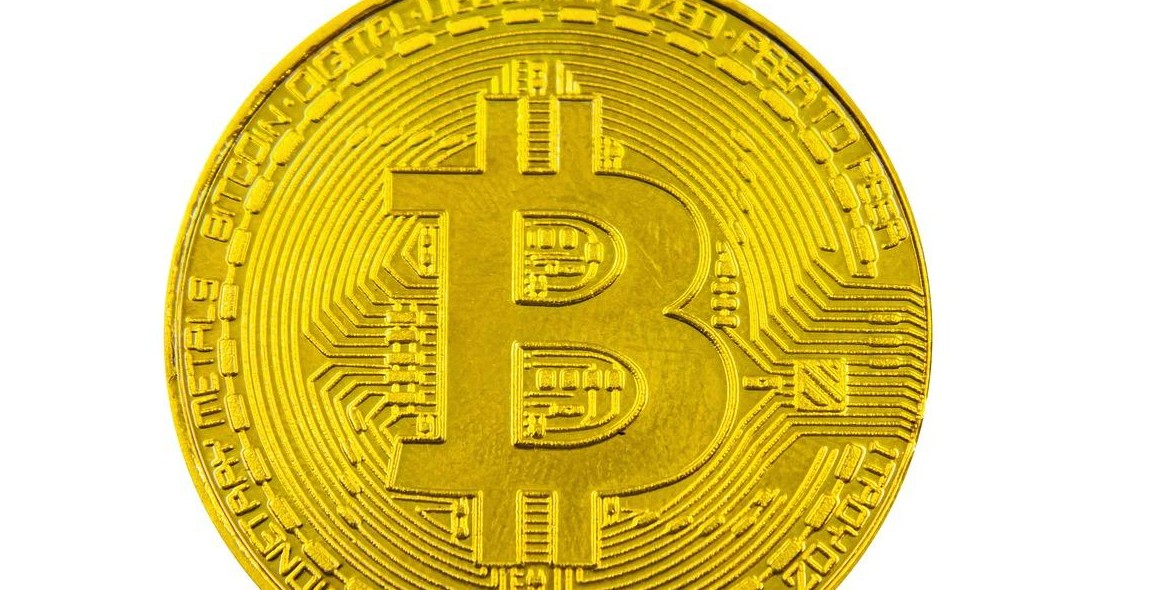How to Identify and Collect Gold Coins: A Guide for Coin Enthusiasts
Gold coins have a long and fascinating history, and collecting them is a popular hobby for many enthusiasts. However, identifying and collecting gold coins can be a challenging task, especially for those who are new to the world of numismatics. In this guide, I will share my personal experience and knowledge on how to identify and collect gold coins.
Why Collect Gold Coins?
Gold coins are not only a source of fascination for collectors, but they also have significant value as an investment. The value of gold coins is determined by their rarity, condition, and historical significance. As such, collecting gold coins can be a lucrative investment, especially if you have a keen eye for identifying rare pieces.
How to Identify Gold Coins
Identifying gold coins requires attention to detail, knowledge of history, and familiarity with different coin grading systems. In this guide, I will provide tips and tricks on how to identify gold coins based on their design, mint mark, weight, and other characteristics.
Design
The design of a gold coin can provide clues about its origin and history. For instance, some coins feature the portrait of a famous historical figure or a national symbol. Others may have intricate patterns or inscriptions that indicate their purpose or significance. By studying the design of a gold coin, you can learn more about its history and value.
Mint Mark
The mint mark on a gold coin indicates where it was produced. By knowing the mint mark, you can determine the rarity of the coin and its potential value. Some mint marks are more rare than others, and collectors often seek out coins with specific mint marks to add to their collections.
Weight
The weight of a gold coin can also provide clues about its authenticity and value. Counterfeit coins are often made with less gold than genuine coins, so a significant difference in weight can indicate a fake. Additionally, the weight of a gold coin can also determine its value based on the current market price of gold.
Conclusion
Identifying and collecting gold coins can be a rewarding hobby and a smart investment. With the tips and knowledge shared in this guide, you can confidently identify and collect gold coins that have historical significance and potential value.

Why Collect Gold Coins?
Gold coins are some of the most sought-after items in the world of coin collecting. They offer a unique combination of historical significance, investment opportunities, aesthetics, and rarity that make them a valuable addition to any collection. Here are some of the reasons why you should consider collecting gold coins:
Historical Significance
Gold coins have been around for centuries and have played a significant role in the history of many countries. They were used as a form of currency, a symbol of power and wealth, and even as a means of artistic expression. Collecting gold coins allows you to own a piece of history and to appreciate the intricate designs and craftsmanship that went into creating them.
Investment Opportunities
Gold coins are also a popular investment option, as they hold their value and often appreciate over time. Unlike paper currency, which can be easily devalued by inflation or political instability, gold coins are a tangible asset that can be held and traded. They are also a hedge against economic uncertainty and can provide a sense of financial security.
Aesthetics
Gold coins are often prized for their beauty and aesthetic appeal. They come in a variety of designs and styles, from classic and traditional to modern and innovative. The intricate details and fine artistry that goes into creating gold coins make them a pleasure to look at and appreciate.
Rarity
Finally, gold coins are often rare and difficult to come by, which makes them even more valuable to collectors. Some gold coins are one-of-a-kind or have a limited mintage, which adds to their allure and exclusivity. Collecting rare gold coins can be a thrilling and rewarding experience, as it allows you to own a piece of history that few others have.
| Reasons to Collect Gold Coins | Description |
|---|---|
| Historical Significance | Gold coins have played a significant role in the history of many countries and offer a unique piece of history to collectors. |
| Investment Opportunities | Gold coins hold their value and often appreciate over time, making them a popular investment option. |
| Aesthetics | Gold coins are often prized for their beauty and intricate details, making them a pleasure to look at and appreciate. |
| Rarity | Gold coins are often rare and difficult to come by, adding to their exclusivity and value to collectors. |
Identifying Gold Coins
Identifying gold coins can be a daunting task, especially for beginners. However, with the right knowledge and tools, it can be a rewarding experience. Here are some tips on how to identify gold coins:
Researching and Identifying Authenticity
When identifying gold coins, it is important to verify their authenticity. The first step is to research the coin’s history and origin. This will help you determine if the coin is genuine or a counterfeit. You can also consult with a professional coin dealer or appraiser to authenticate the coin.
Another way to identify the authenticity of gold coins is by examining their weight and size. Most gold coins have a standard weight and size, and any deviation from this standard could indicate a counterfeit. You can also use a magnet to check if the coin is made of pure gold, as gold is not magnetic.
Grading and Valuing Coins
Grading is the process of evaluating the condition of a coin. It is important to grade gold coins accurately as it affects their value. The grading system ranges from Poor (P) to Mint State (MS). The higher the grade, the more valuable the coin.
Valuing gold coins is also important, especially if you are planning to buy or sell them. The value of gold coins is determined by several factors, including rarity, condition, age, and demand. You can consult with a professional coin dealer or use online resources to determine the value of your gold coins.
Spotting Counterfeits
Counterfeit gold coins are a common problem in the coin collecting industry. To spot counterfeits, you can examine the details of the coin, such as the date, mint mark, and design. Counterfeit coins often have incorrect details or poor quality designs.
You can also use a loupe or magnifying glass to examine the coin’s surface. Counterfeit coins often have surface irregularities, such as bumps, scratches, or bubbles. Additionally, you can use a scale to check the weight of the coin, as counterfeit coins often weigh less than genuine coins.
| Signs | Explanation |
|---|---|
| Incorrect details | Counterfeit coins often have incorrect dates, mint marks, or designs. |
| Poor quality design | Counterfeit coins often have poor quality designs compared to genuine coins. |
| Surface irregularities | Counterfeit coins often have surface irregularities, such as bumps, scratches, or bubbles. |
| Weight discrepancy | Counterfeit coins often weigh less than genuine coins due to the use of cheaper materials. |
Identifying gold coins requires patience, knowledge, and attention to detail. By researching and authenticating the coin, grading and valuing it accurately, and spotting counterfeits, you can become a successful gold coin collector.
Collecting Gold Coins
Collecting gold coins is a popular hobby among coin enthusiasts. Gold coins are not only beautiful, but they also hold value as a precious metal. Here are some tips on how to build, store, protect, sell and trade your gold coin collection.
Building a Collection
When building your gold coin collection, it is important to consider the rarity, condition, and historical significance of the coins. Rare coins in good condition are worth more than common coins in poor condition. It is also important to research the history of the coins to understand their significance and cultural context.
One way to start building your collection is to attend coin shows or visit reputable coin dealers. These events and dealers can provide valuable information and advice on which coins to purchase and how to build your collection over time.
Storing and Protecting Your Coins
Once you have started building your collection, it is important to store and protect your coins properly. Gold coins should be kept in a cool, dry place and away from direct sunlight to prevent tarnishing or damage. It is also recommended to store your coins in a coin holder or capsule to prevent scratching or other damage.
Investing in a safe or safety deposit box is also a good idea for long-term storage and protection of your collection. Insurance coverage should also be considered to protect your investment in case of theft or damage.
Selling and Trading Coins
When it comes to selling or trading your gold coin collection, it is important to work with reputable dealers or auction houses. Research the market value of your coins before making any transactions and be prepared to negotiate prices.
It is also recommended to have your coins graded by a professional grading service to ensure their authenticity and condition. This can increase the value of your coins and make them more attractive to potential buyers or traders.
Remember to always keep records of your transactions and maintain a detailed inventory of your collection. This can help you keep track of the value of your coins and make informed decisions when it comes to selling or trading them.
| Tip | Description |
|---|---|
| Research | Research the rarity, condition, and historical significance of coins before purchasing. |
| Proper Storage | Store coins in a cool, dry place and away from direct sunlight. Use a coin holder or capsule to prevent damage. |
| Work with Reputable Dealers | Always work with reputable dealers or auction houses when selling or trading coins. Have coins graded to ensure authenticity and condition. |
| Maintain Records | Keep detailed records of transactions and maintain an inventory of your collection. |

Conclusion
Identifying and collecting gold coins can be a rewarding and exciting hobby for coin enthusiasts. From ancient coins to modern bullion, there is a wide variety of gold coins available for collectors to acquire. However, it’s important to have a solid understanding of the characteristics and history of each coin to ensure authenticity and value.
Tips for Identifying Gold Coins
- Research the coin’s history and characteristics
- Examine the coin’s weight, size, and purity
- Look for any distinguishing marks or inscriptions
- Use a magnifying glass to inspect the coin closely
- Consult with a professional coin dealer or appraiser
Tips for Collecting Gold Coins
- Set a budget and stick to it
- Focus on collecting coins that interest you
- Join a coin collecting club or community
- Store your coins in a safe and secure location
- Consider getting your collection insured
Overall, collecting gold coins can be a fascinating and rewarding hobby for those who have a passion for history, art, and finance. By following these tips and guidelines, you can become a successful and knowledgeable gold coin collector.
| Keyword: | Identify and Collect Gold Coins |
| LSI Keywords: | collecting gold coins, identifying gold coins, coin enthusiasts, professional coin dealer, appraiser, coin collecting club, storing coins, insuring collection |
